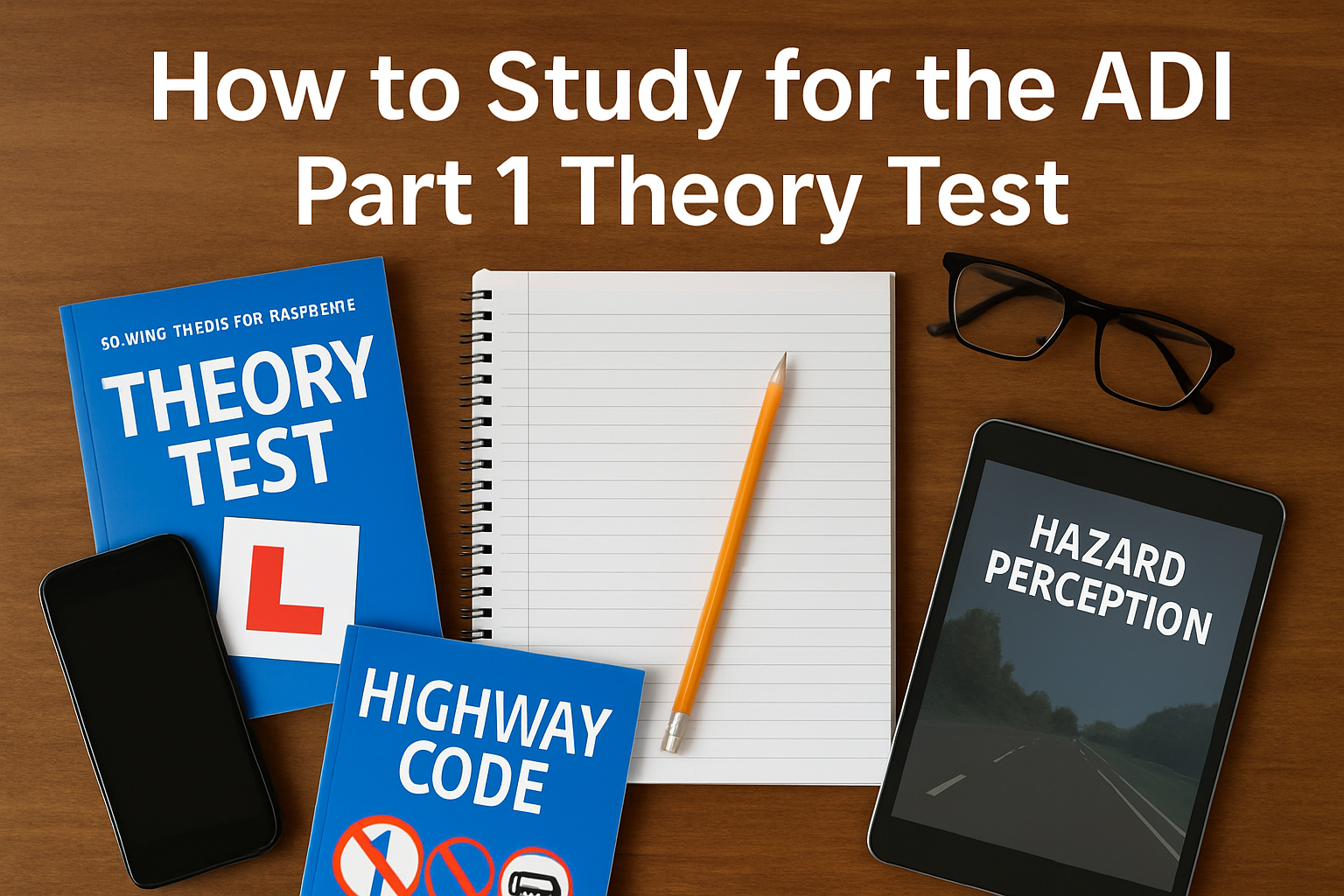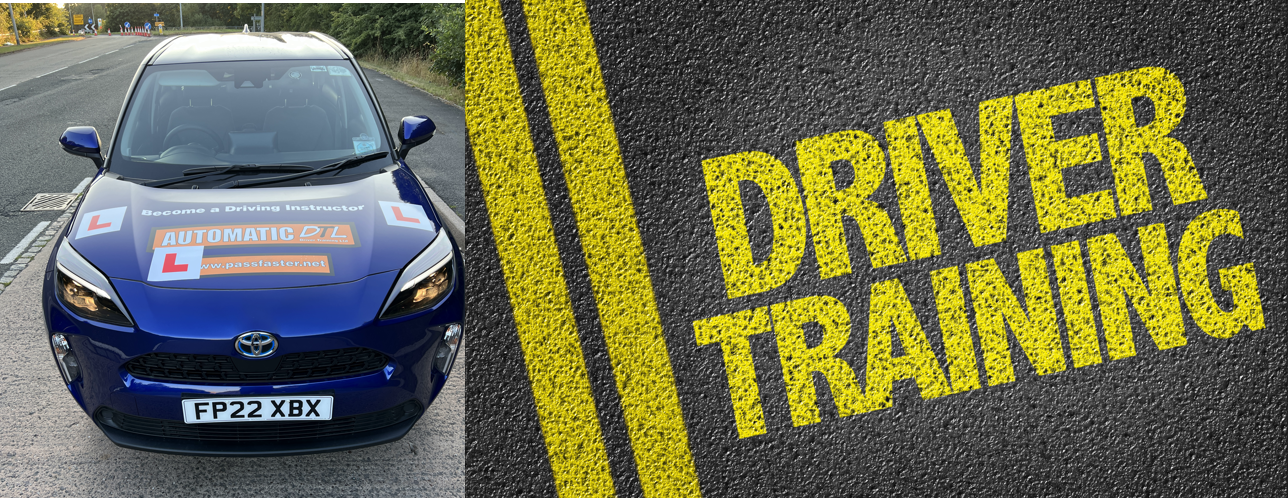The Four Questions That Make You a Stronger ADI Part 1 Trainee

How simple reflection turns wrong answers into real understanding
How to study for the ADI Part 1 Theory Test Some trainees treat wrong answers like something to hide from, clicking past them as quickly as possible. But the sharpest future instructors do something different. They pause. They lean in. They treat every mistake like a signpost pointing to the next stretch of learning.
And the tool they use is surprisingly simple: four honest questions that turn confusion into clarity.
These are questions that build the quiet, steady habits great instructors rely on. They don’t just help you pass ADI Part 1. They help you think and teach like a professional.
Let’s break them down.
How to study for the ADI Part 1 Theory Test 1. “What part of the rule did I miss?”
Many wrong answers aren’t caused by total misunderstanding. They’re caused by missing one detail. And in the world of driving instruction, detail matters.
Take this classic yellow box junction question:
“When may you wait in a yellow box junction?”
If you answer: “When turning right,” you’ve missed a vital piece.
The full rule is:
You can only wait if you’re turning right AND oncoming traffic is preventing you from completing the turn.
Half-right is still wrong, but it isn’t a failure.
It’s a clue.
This question helps you identify exactly which missing piece you need to plug. Instead of revising the entire topic, you can fix the specific gap. That’s efficient, focused learning. It’s the way instructors learn: accurately, not endlessly.
How to study for the ADI Part 1 Theory Test What this means for trainees:
You’re sharpening the fine detail the test looks for. More importantly, you’re building the precision your learners will one day rely on.
2. “Did I misunderstand the wording?”

Sometimes you know the content perfectly well, but the phrasing of the question leads you astray.
Words like:
• “In good conditions”
• “When stationary in traffic”
• “Only if necessary”
• “At night”
• “In a tunnel”
These aren’t throwaway phrases. They’re the key. The DVSA uses them to test your attention to detail and your ability to follow exact rules, just as you expect a learner to.
For example:
A question may ask about using fog lights “when visibility is reduced to less than 100 metres.”
Choose an answer about general poor weather and you’ve missed the specific requirement.
It’s not your knowledge that’s weak.
It’s your reading speed.
What this means for trainees:
Good instructors read carefully. They train themselves to notice the little things. Slowing down isn’t a flaw. It’s a mark of professionalism.
3. “Am I guessing instead of knowing?”
This is a brave question. It forces honesty. And it’s one of the most useful reflections you can make.
If you catch yourself thinking:
“I’ve seen that sign… I think it means this?”
or
“Two answers seem similar… I’ll pick the one that feels right,”
that’s guessing.
Guessing hides weak spots.
Understanding reveals them.
For example:
You mix up the “end of a restriction” signs with “national speed limit applies.”
They look similar. They both appear at the end of a restriction. But the meaning is different.
A wild guess won’t help you during the exam. And it certainly won’t help when a learner asks, “What does that sign mean?” as you approach it at 40mph.
What this means for trainees:
Every time you catch yourself guessing, you’ve found a gap worth strengthening. You’re shaping yourself into the kind of instructor who knows, not hopes.
4. “Could I explain this to a learner with confidence?”
This is the gold-standard test of understanding. It’s not about passing the theory test. It’s about preparing for the role you want to step into.
Let’s say you get a stopping distance question wrong.
Ask yourself:
“If a learner asked me why the stopping distance doubles in the rain, could I explain it smoothly?”
Could you talk through:
• reduced tyre grip
• surface water
• increased braking distance
• slower reaction times
• how speed magnifies everything?
Or would you fumble it?
If you couldn’t teach it, you don’t fully understand it yet.
And that’s fine.
That’s exactly why this reflection matters.
What this means for trainees:
Part 1 isn’t just an exam. It’s the foundation of your teaching career. Explaining things clearly is the heart of the job. Start now.
How to study for the ADI Part 1 Theory Test The Strength of These Four Questions
These reflections do something no question bank alone can do. They train you to think like an instructor:
• calm
• reflective
• analytical
• aware of detail
• focused on understanding
• capable of explaining
• comfortable fixing weak spots
Instead of rushing through revision, you’re building depth.
Instead of hiding from gaps, you’re using them.
Instead of fearing mistakes, you’re turning them into stepping stones.
This is traditional, steady, craftsman-like learning.
The kind of learning that sticks.
How to study for the ADI Part 1 Theory Test The Road Ahead
When you train this way, the ADI Part 1 exam stops feeling like a hurdle and becomes a checkpoint. A moment to confirm what you already know, not something you need to fear.
Because you’ve already done the real work:
You’ve learned how to learn.
You’ve learned how to notice your gaps.
You’ve learned how to build strength where others skim.
And that is exactly what makes a strong, confident, dependable driving instructor
What are the four questions that help trainee driving instructors improve their understanding?
The four questions are: ‘What part of the rule did I miss?’, ‘Did I misunderstand the wording?’, ‘Am I guessing instead of knowing?’, and ‘Could I explain this to a learner with confidence?’
Why is it important for trainee instructors to ask themselves, ‘What part of the rule did I miss?’
Asking this helps identify specific details you may have overlooked, allowing focused and efficient learning to sharpen your understanding of driving rules.
How does questioning, ‘Did I misunderstand the wording?’, improve your training?
It encourages careful reading and attention to detail, ensuring you fully understand the precise language used in regulations, which is crucial for accurate application.
Why should trainee instructors consider whether they are guessing rather than knowing?
Recognizing guessing reveals gaps in knowledge and encourages thorough understanding, helping instructors build confidence and accuracy in their teaching.
How to study for the ADI Part 1 Theory Test How does being able to explain concepts confidently reflect your readiness as an instructor?
If you can explain topics clearly and confidently, it shows you truly understand the material, which is essential for effective teaching and preparing learners.
Contents
- 1 The Four Questions That Make You a Stronger ADI Part 1 Trainee
- 1.1 How simple reflection turns wrong answers into real understanding
- 1.2 How to study for the ADI Part 1 Theory Test 1. “What part of the rule did I miss?”
- 1.3 How to study for the ADI Part 1 Theory Test What this means for trainees:You’re sharpening the fine detail the test looks for. More importantly, you’re building the precision your learners will one day rely on.
- 1.4 2. “Did I misunderstand the wording?”
- 1.5 3. “Am I guessing instead of knowing?”
- 1.6 4. “Could I explain this to a learner with confidence?”
- 1.7 How to study for the ADI Part 1 Theory Test The Strength of These Four Questions
- 1.8 How to study for the ADI Part 1 Theory Test The Road Ahead
- 1.8.1 What are the four questions that help trainee driving instructors improve their understanding?
- 1.8.2 Why is it important for trainee instructors to ask themselves, ‘What part of the rule did I miss?’
- 1.8.3 How does questioning, ‘Did I misunderstand the wording?’, improve your training?
- 1.8.4 Why should trainee instructors consider whether they are guessing rather than knowing?
- 1.8.5 How to study for the ADI Part 1 Theory Test How does being able to explain concepts confidently reflect your readiness as an instructor?



